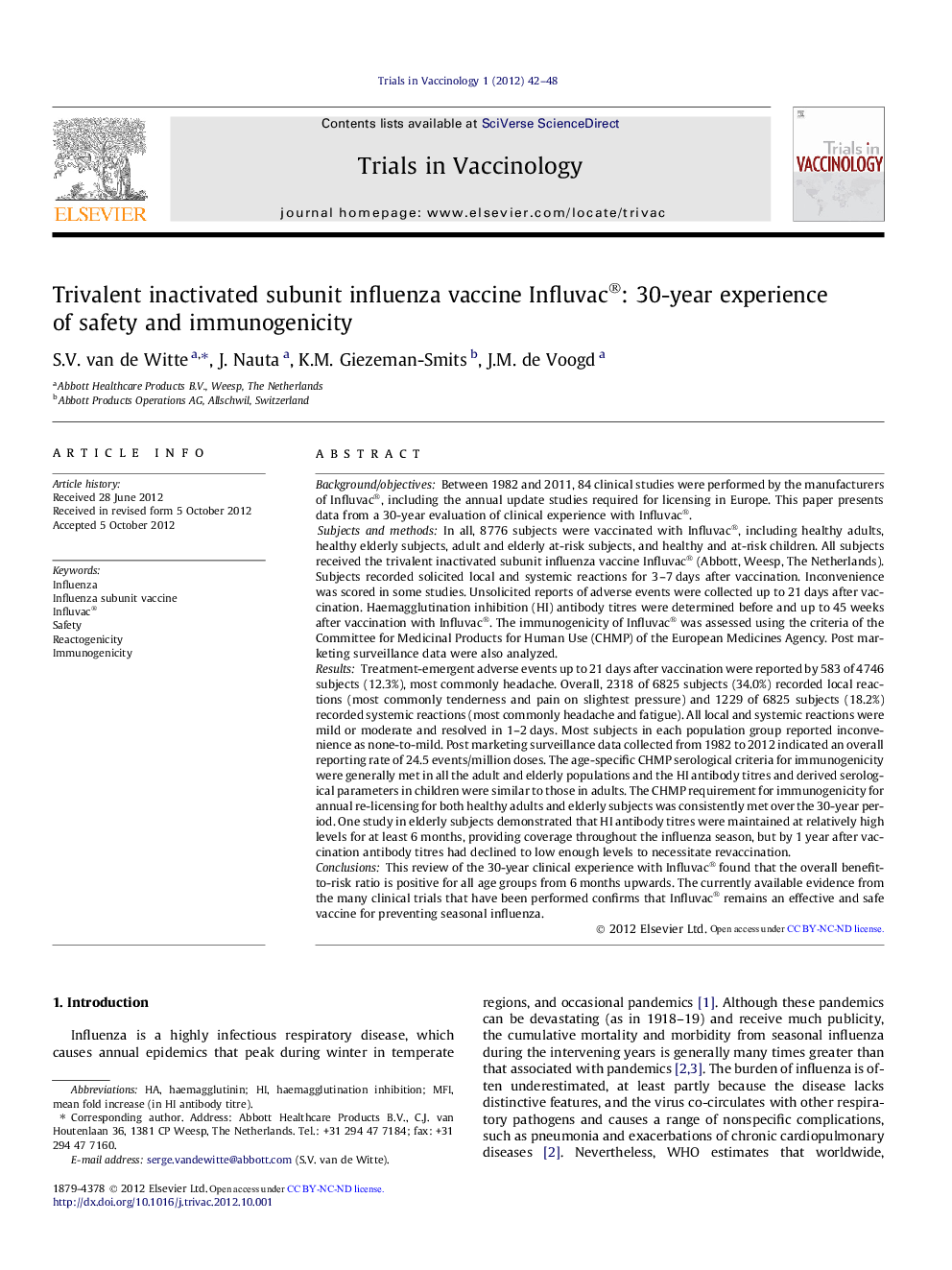| Article ID | Journal | Published Year | Pages | File Type |
|---|---|---|---|---|
| 2474392 | Trials in Vaccinology | 2012 | 7 Pages |
Background/objectivesBetween 1982 and 2011, 84 clinical studies were performed by the manufacturers of Influvac®, including the annual update studies required for licensing in Europe. This paper presents data from a 30-year evaluation of clinical experience with Influvac®.Subjects and methodsIn all, 8776 subjects were vaccinated with Influvac®, including healthy adults, healthy elderly subjects, adult and elderly at-risk subjects, and healthy and at-risk children. All subjects received the trivalent inactivated subunit influenza vaccine Influvac® (Abbott, Weesp, The Netherlands). Subjects recorded solicited local and systemic reactions for 3–7 days after vaccination. Inconvenience was scored in some studies. Unsolicited reports of adverse events were collected up to 21 days after vaccination. Haemagglutination inhibition (HI) antibody titres were determined before and up to 45 weeks after vaccination with Influvac®. The immunogenicity of Influvac® was assessed using the criteria of the Committee for Medicinal Products for Human Use (CHMP) of the European Medicines Agency. Post marketing surveillance data were also analyzed.ResultsTreatment-emergent adverse events up to 21 days after vaccination were reported by 583 of 4746 subjects (12.3%), most commonly headache. Overall, 2318 of 6825 subjects (34.0%) recorded local reactions (most commonly tenderness and pain on slightest pressure) and 1229 of 6825 subjects (18.2%) recorded systemic reactions (most commonly headache and fatigue). All local and systemic reactions were mild or moderate and resolved in 1–2 days. Most subjects in each population group reported inconvenience as none-to-mild. Post marketing surveillance data collected from 1982 to 2012 indicated an overall reporting rate of 24.5 events/million doses. The age-specific CHMP serological criteria for immunogenicity were generally met in all the adult and elderly populations and the HI antibody titres and derived serological parameters in children were similar to those in adults. The CHMP requirement for immunogenicity for annual re-licensing for both healthy adults and elderly subjects was consistently met over the 30-year period. One study in elderly subjects demonstrated that HI antibody titres were maintained at relatively high levels for at least 6 months, providing coverage throughout the influenza season, but by 1 year after vaccination antibody titres had declined to low enough levels to necessitate revaccination.ConclusionsThis review of the 30-year clinical experience with Influvac® found that the overall benefit-to-risk ratio is positive for all age groups from 6 months upwards. The currently available evidence from the many clinical trials that have been performed confirms that Influvac® remains an effective and safe vaccine for preventing seasonal influenza.
